Since my last post here, I’ve continued my bread making to include sourdough bread, making my own sourdough starter.
It’s actually water kefir sourdough bread made with whole wheat flour, from scratch.
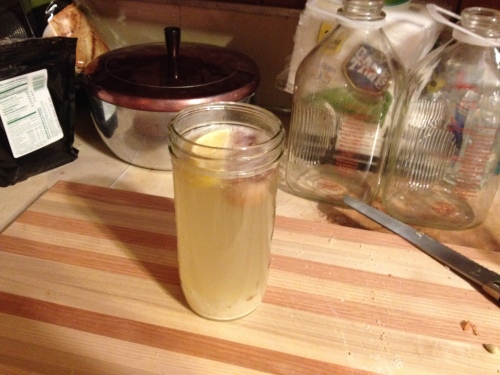
Water kefir is fairly simple to make; just feed water kefir grains with sugar, filtered (non chlorine) water, add a little organic dried fruit or raisins and voila! Every 24-48 hours, you have a zingy probiotic drink! (Photo by Jim Ewing)
I made the water kefir then used the water kefir as a lactobacillus for a sourdough starter; then after three days I made the sourdough bread from the starter.
The honey is raw unfiltered from my bees — all natural, no chemicals of any kind.
In my last post, I made bread using flour that I ground myself from raw wheat like that grown locally. This was “store bought” wheat flour. I might try it with home ground later. But I’m also thinking about trying some other grains/sourdoughs, too.
This recipe (if you are interested, below in photo form) should be fine for vegans. This was made without any eggs or any dairy products.
Ingredients: water, water kefir (water kefir grains, organic lemon, organic raisins, organic dried apricots, organic powdered sugar), sea salt, honey, Gold Medal Natural Whole Wheat Flour, Organic Gold Medal All Purpose Flour, grapeseed oil.
I actually had ordered some sourdough starter online, but (as seems to be the case with me more often than not), I fumbled around and went at it backwards. Turns out, I ordered a sourdough starter for a type of grain which I didn’t have.
But, still, in keeping with my learning-through-mistakes trajectory, it turns out also that I had perfect ingredients in hand to make sourdough starter from scratch.
Now, I know, I could have made sourdough from the lactobacteria that we made our kraut from, or from the atmosphere here at the house, which produced the kraut. But I also had some water kefir on hand, which I used to make water kefir sourdough – based on a recipe found in Cultures for Health (culturesforhealth.com).
Sourdough facts
In case you are not familiar with sourdough, other than vague allusions to grizzled San Francisco ’49er prospectors or something, there’s a lot to it that speaks in its favor.
As far as bread goes, sourdough gives you the most nutrients in a balanced form. Since it’s extensively fermented before it’s baked, it’s essentially predigested. The grain’s proteins and starches are broken down by the process and the sugars are transformed into compounds that are absorbed by the body more slowly than with standard bread.
People with gluten sensitivities are told to stop eating wheat and are told to only buy gluten-free bread and pasta products. But it’s been documented that extensively fermented sourdough is essentially gluten free even with wheat.
In a well known study in 2010 by a team of scientists led by Luigi Greco at the University of Naples, a 60-day diet of baked goods made from hydrolyzed wheat flour, manufactured with sourdough lactobacilli and fungal proteases, was found not to be toxic to patients with celiacs disease. (See: http://www.cghjournal.org/article/S1542-3565%2810%2900987-0/abstract)
While there are variables that can change the results dramatically, including flour particle size, kneading protocol, leavening process and baking procedure, it has also been scientifically documented in peer-reviewed studies that blood sugars don’t spike eating sourdough bread in contrast with common bread. That includes some breads that you might find surprising, beyond white bread, to include 11-grain and sprouted-grain breads. That makes sourdough a preferred bread for people worried about being overweight, or dieting or with pre-diabetic conditions.
Note: I’m not a dietician or physician and am only commenting on what I have read in scientific literature based on my own layman’s understanding; only make medical and dietary decisions that may affect your health upon the advice of competent health professionals!
If you are interested in making this type of bread, here’s a photo step by step. This recipe is based on one found on the Cultures for Health Facebook page. But I did not use a gluten-free flour and changed the ingredients somewhat, both in quantities and ingredients (to make it vegan).
First, I made the starter.
I took two tablespoons of water kefir and added it to a mixture of one-half cup of flour and one half cup of non chlorinated (filtered) water. I repeated this (sans water kefir) every 12 hours for three days; except, after the first day, I added only 1/4-cup of flour and 1/4 cup of water.
Sourdough starter after the first day
Sourdough starter after the second day. As you can see, it filled up the jar; so when it settled down the next morning, I poured off the clear liquid (called hooch; which most people nowadays just stir in) and reduced the amount of flour/water I was adding.
Sourdough starter on day 3. Here’s the starter with some hooch in it. As you can see, it’s bubbling nicely. When I stirred it, it became thick like dough; so, I figured it was ready. I made the “sponge” or pre-loaf mixture.
Sponge: I mixed 1 cup of sourdough starter (that left about 1 cup in the jar, which I fed with 1/4-cup of flour and no more water and set aside for future loaves) with
2 cups of water,
3 cups of whole wheat flour
I covered it with a loose towel and let it sit overnight.
The next morning, I uncovered the mixture and realized I didn’t have a big enough bowl. It was up to the edge and the recipe called for more ingredients.
So, I stirred the sponge, added the honey and salt and 3 cups of flour, and split the sponge into two with one in each bowl.
I kneaded and covered them, and let them sit for four hours.
Then, I kneaded them some more and put each one in a loaf pan and I let that sit for four hours.
Finally, I preheated the oven to 375 degrees and baked for 35 minutes. I have a meat thermometer that I use for baking and checked the temperature of the loaf, which was 200 degrees in the middle – anywhere between 190-200 shows doneness, or no uncooked dough. I pulled them out, let them sit for 15 minutes in the pans,then put them on a rack to cool.
Looked good to me!
And tasted good, too!
Things I would do differently? Mind you, I’m still a rank novice when it comes to cooking and certainly baking bread; but I’m learning as I go along, and that’s part of the fun of it. It surprised me the amount of dough after the sponge had sat out all night; it was more than one loaf, but less than two full-sized loaves. The recipe said two loaves, but I assumed that was in the pan, not in the bowl. I don’t have a bowl big enough for two whole loaves. So, I’m going to have to think about that.
I also am still dissatisfied with the amount my loaves are rising, or more accurately, not rising. While the bread has a nice consistency, a nice taste, without too much cavitation or holes, it’s not rising enough in my estimation.
I keep my house at 68 degrees and all the cookbooks say the room temp should be above 70. I actually turned up the thermostat to 72 degrees to make this bread; which seemed like a heat wave. But the farmhouse I live in is so drafty, I’m not sure that made any difference and maybe just boosted global warming a bit.
So, I’ll continue to fiddle with that. It could be that the starter is so young, it needs to age a bit. Or, it could be the whole wheat. I’ve found that white flours seem to rise better. That itself poses a conundrum: I want the germ and whole grain, not refined or recombined flour. If the tradeoff is the amount of rise, I can live with that. We’ll see! More later!
I have a lot more plans and ideas and experiments.
Happy New Year, Everyone!
Jim PathFinder Ewing is a journalist, author, writer, editor, organic farmer and blogger. His latest book titled Conscious Food: Sustainable Growing, Spiritual Eating (Findhorn Press) is in bookstores now. Find Jim on Facebook, follow him @edibleprayers or visit blueskywaters.com.

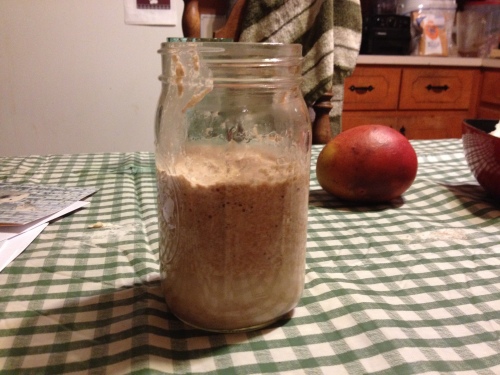
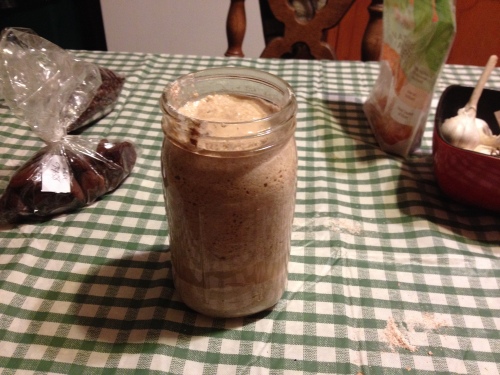
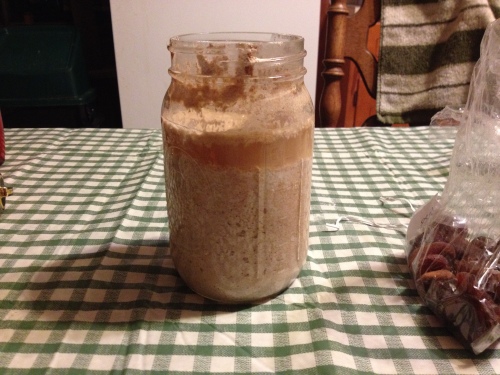
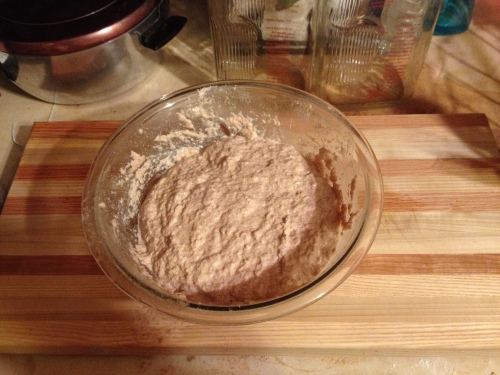
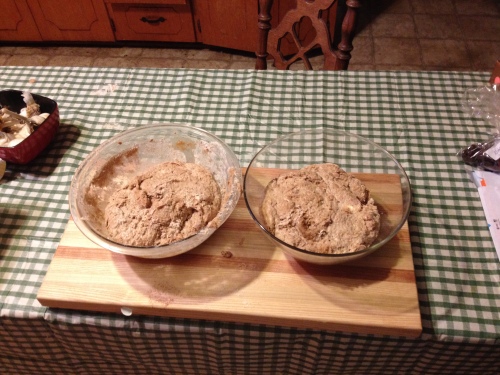
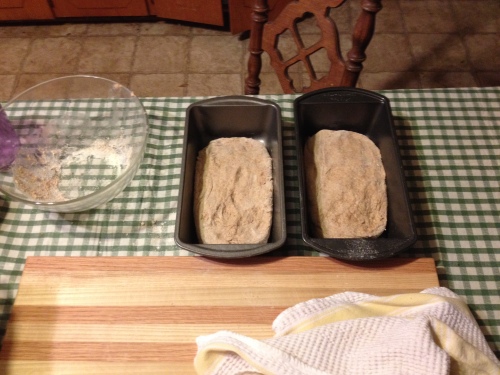
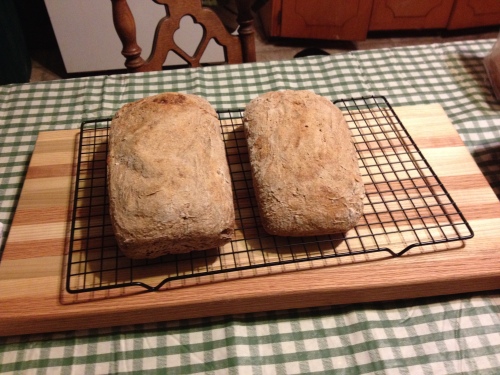
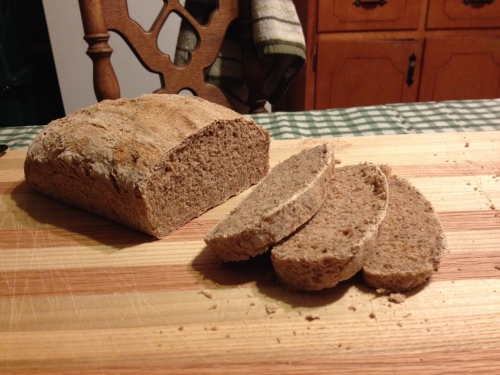

Did you consider that kefir’s proteases makes the gluten strands weaker? Try adding vital wheat gluten perhaps.
Sounds like a plan! Thanks!
You’re welcome, tell us how it goes when you have done it. I’ve only experimented a little with it myself. 🙂